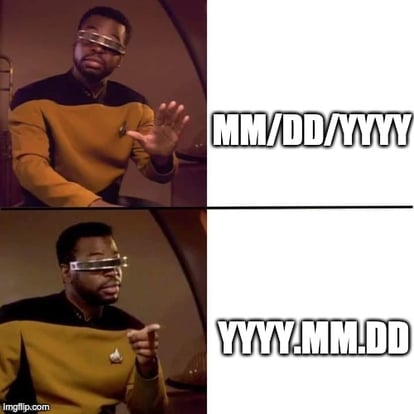 Whoever tells you that localization is easy and effortless is telling you nonsense.
Whoever tells you that localization is easy and effortless is telling you nonsense.
If this were true, the localization industry would have disappeared from the business map, just like the magnetic media industry, shortly after Google launched its free Machine Translation solution.
Actually, localization is a very complex matter. The process of adapting your product to a local market, mainly through translation, starts at the designing stage.
Localization combines the use of the latest AI powered technology with being attentive to cultural and social nuances. It also follows local legal regulations, while making sure that your global users' experience will obtain a high level of satisfaction.
And here you are, the owner of a technology company, standing in front of all these aspects and thinking: Where do I start?
You are not alone.
The majority of technology companies face certain problems with localization.
At ATL, we have worked with small and large technology companies, and have helped them localize their products for various markets: Mexico, Germany, Russia, Egypt, Italy, Poland, China, Korea or Japan. We are aware of technology companies' most common fears and obstacles.
This article focuses on the five most common and easy-to-fix problems that technology companies face with translation to help you avoid them and succeed globally without wasting time and money.

One of the questions that our clients ask is how they should prepare for localization. That is a very important question, but the answer leads to discovering problems that need to be addressed.
We are not yet an international company and we won't be expanding any time soon is a statement made by some companies when asked about their plans for going global.
Even if you're not planning global expansion for now, design your product in a globalization friendly way. One day you may want to sell outside of your country, and at that point, going back to the designing stage will require a lot of complex operations and product updates.
Therefore, it is advisable to design your products with localization in mind.
What exactly does that mean?
If you create a product that contains programming and a display, make sure you allow space for translated UI (User Interface) content. Languages all over the world contain shorter or longer terms for the same sentence, and it's good to allow space for that.
Related content: A Guide to an Effective UI Software Localization Process
Use symbols to limit the localization effort. But when using symbols, choose those which are globally recognized and not offensive.
If the product displays time or date, make sure to include flexible formatting. Not all countries follow the MM DD YYYY format. Actually, many countries use the DD MM YYYY formatting. There are also different separators used for dates like full stop, hyphen or slash.

The same goes for time format. To start with, you need to know about the 12-hour and 24-hour clock. Not all countries use am and pm abbreviations to divide the 24 hours of a day into 12-hour periods.
.png?width=553&name=costs%20of%20translation%20(1).png)
It was decided in a company board meeting that the company should go global and extend the number of languages that their products are available in. But when the meeting was over, the budget for marketing stayed the same and the part of the marketing budget assigned for localization didn't budge either.
So, what can companies do about it?
Some companies translate internally, counting on reducing the cost. This approach may be perfect for small organizations with a small amount of content. But your local distributors should focus on their primary tasks instead of translation.
Related content: Translation Agencies vs. Local Distributors: Compare Your Options
The same goes for your in-house marketing team. They have so much on their plate, and most of the time, they are not professional linguists. So adding translation to their duties may not only be overwhelming, it can also impact your brand reputation if the marketing content contains errors and inconsistencies.
This could very well happen if your content is not translated by professionals.
Related content: Translation Agency vs. Your Marketing Team: Who Should Translate Your Content?
One of the differences between your internal staff and a professional translation services company is that the latter cooperates with multiple subject-matter experts.
You will have to have legal documentation translated, like contracts, privacy policy and terms & conditions. Product launch also requires translating technical documentation, at least the main page of your website, User Interface if the device has one, and the whole marketing campaign. Is that something that your internal team is able to handle?
What if you launch two or three products, or a full catalogue? What if it needs localization into several languages at once like, Japanese, Spanish, Korean, Italian and German?
If we are talking about software and UI, and there is file engineering included, is it still something the internal team can manage?
So, if you don't translate internally, then how?
Inappropriate allocation of internal resources is the root of many technology companies' localization headaches. And the remedy in this case is called a professional translation service provider.
Before jumping to conclusions too fast, there are some basic questions that technology companies' owners often ask that need answering.
Is there a cost-efficient way to get started?
Yes, there is!
There are very powerful CAT (Computer Assisted Translation) tools to choose from in order to cut your translation cost.
Do we have to invest in these tools?
No, this is the localization service provider's (LSP) cost, not yours.
So, how do tools owned and paid for by a translation agency reduce your costs?
This is because translation companies are your partners, and they understand your problems. They understand that a limited budget is one of those problems.
Related content: How Much Do Translation Services Really Cost? [Rates & Factors]
What about those localization companies that take advantage of the cost-reducing elements and don't tell you about your potential savings? Run as fast as you can, they will rob you heartlessly.
Related content: 7 Tips to Avoid Wasting Your Translation Budget
How exactly will the translation savings be calculated? We have a text for every product in our different product series that sometimes only differs by a few words, but sometimes by one or two sentences.
If your document contains repetitive segments (logical portions of text like sentences, expressions, etc.), CAT tools help accelerate the localization process by prompting the translator as to whether and how the repeated segment has been previously translated.
This reduces the time and cost of your document translation. In professional translation proposals, these words are referred to as Repetitions and are charged up to 75% less.
CAT tools can analyze the text and immediately prepare statistics, showing the number of words within the repetitive segments.
Important note: Single words repeated in the document are not counted in the statistics as repetitions. The highlighted words in the text below would be counted as repetitions:

But here, the highlighted words below would NOT be counted as repetitions:

Translation Memory (TM) is another cost-reducing feature of CAT tools. It is a database, storing all the translated segments. It contains the original and the translated text.
Thanks to the TM, it is possible to reuse your previously translated content. As a result, the more you translate, the cheaper it gets.
For example, you assign a 200-page document for translation. There are 50,000 words. The translated content is saved in your TM.
After that, you assign another 200 pages for translation. There are 49,206 words. The documents contain pieces of previously translated segments.
These segments will be recognized by the CAT tool as a TM match type (possible to pull them from your TM, and as a result they cost less). Each TM match type receives a discount, hence lowering the cost of translation.
Related content: Generating Translation Savings in Translation Memory [video]
It is also helpful when you migrate to another CMS with your website and update the content. It's already enough that you have to pay for the updated marketing content or documentation, as well as covering the product development expenses.
Thanks to the proper use of translation software, especially Translation Memory, your already-translated content can be reused. The cost of translation can be considerably reduced, compared to the price of a translation estimated without the TM.
Cost reduction is rather unlikely to happen when working with scattered internal teams, with no localization manager to centralize the processes. And this is one of the many reasons you should consider cooperating with a professional translation service provider.
.png?width=551&name=trust%20translation%20companies%20(1).png)
Tech companies often worry about the translator's understanding of their product.
It's natural that product owners want to hire professionals well-versed in their industry. This is completely understandable, but rest assured that professional translation service providers know how to assign linguists according to their talent and experience.
First of all, certified translation companies work in compliance to ISO 17100:2015 translation standards from the International Organization for Standardization.
It clearly explains what standards must be met by linguists.
What skills and experience do translators have to demonstrate to be able to handle your project?
One of the requirements is to be a subject-matter expert with expertise proven by a certificate of higher education, or several years of documented experience.
But technical translation is not only about translating the product-specific terminology correctly. About 10% of the whole content consists of technical terms, unless we are talking about UI (User Interface).
First, these terms are extracted and translated. After that, they are reviewed by the specialist either appointed by you, or selected by the localization company.
It can be a local distributor or one of your local clients. Companies usually establish contacts locally before they launch translation, so there is always someone who can approve the suggested translation for the key terms.
Can you set up a meeting between your translator and our reviewer?
Companies with transparent client review processes encourage cooperation between your subject-matter experts and the linguist. They not only communicate, but they invite reviewers into the localization environment, provide all the reference materials, and train them in how to review in CAT tools in order to save time and provide the best results.
Related content: 8 Translation Review Problems That May Make Your Translation Company's Name a Cussword in Your Office
Translation companies not afraid of feedback. On the contrary, they want it. They collect feedback, learn from long-term cooperation with reviewers and their preferences towards the style and terminology. Such companies show changes in the evaluation of translations over time, through graphic charts that you can show your boss with confidence.
%20(1).png?width=600&name=translation%20will%20not%20slow%20you%20down%20(1)%20(1).png)
This problem may come from an experience with the in-house localization team management. As already mentioned, localization is not a piece of cake, and it takes time and effort to do it right.
The most common fears are related to time-consuming file preparation, version management, cross-checking, and providing feedback. Another thing is managing terminology among technical writers, translators, marketing translators, and the legal department.
There are also the aspects of managing payments and keeping track of who did well, and whose jobs are still under review.
This can leave you confused, and this is just the tip of the iceberg.
Translation companies like ATL completely understand that and have solutions ready to be implemented. They are also able to provide custom solutions to meet your individual needs.
Presumably you guys have done this before and have a good idea of the end-to-end process.
Yes, we have and yes, we do. That is how 90% of localization services providers would comment on the above sentence.
Integration between your platform and the translation software is the key here.
The best solutions allow connections between your content and localization company's translation tools. It enables you to have your content translated in a faster, more economical manner, thanks to a combination of a project management, the linguists' efforts, and translation process automation.

You don't have to worry about updates or adding new features that need translation. It can all be assigned for localization into several languages with just a few clicks.
Obviously, the integration implementation stage takes some time and requires additional budget, but what happens after that is pure localization workflow and optimization magic.
Related content: 50+ Translation Integrations That You Should Know About
There are companies that are concerned about whether their data is safe.
Rest assured, translation companies work under strict data protection rules.
The first thing you do before even sending any reference material their way, is to ask them to sign an NDA (Non-Disclosure Agreement). This is standard practice, and is respected all over the world.
Another thing is GDPR compliance.
Last but not least, there are all sort of processes that the translation service provider needs to have in place for information security in order to be ISO 17100:2015 certified.
This includes processes for the safe-keeping, but also return or destruction of all material, like documents or data, that have been received from client.
You are not the only one that takes data security seriously. Other tech companies are also paying attention to that.
Localization companies are prepared to answer any questions related to this topic, and will provide comprehensive answers every time you ask. You have every right to receive information regarding the security of your data.
The companies that work with you are required to provide you with sufficient information that will allow you to work on your brand's global development with peace of mind.
.png?width=564&name=find%20the%20right%20solution%20for%20content%20translation%20(1).png)
The first step to moving forward is identifying the problem.
Now, that you know how to identify the most common problems that technology companies face with translation, you can compare your own doubts and identify them.
Next, find out as much information as possible about the translation company and the problems that worry you. Check case studies, contact people who’ve been there and done that. Read about the best practices and ask translation professionals for advice.
Let the problems mentioned in this article become advantages. Since you already know about them, you can prepare and move your company ahead of your competition.
In case of any problem that ATL can help you with, contact us and we will happily guide you through the complex localization process optimization.
Recommended articles:
4 Reasons Brands Reject Translation Companies That Could Be Right for Them
How to Boost the Translation Into Multiple Languages at Once
+1 857 777 5741 ext. 203 (business inquiries)
+1 857 777 5741 ext. 205 (career inquiries)
Trylinskiego 16, 10-683
Olsztyn, Poland
Copyright ATL 2025. All Rights Reserved.